Filoli’s New Herb Garden

by Owen Grandy, Plant Collections Intern, Summer 2024
A corner of Filoli’s Vegetable Garden has come alive with new sights and smells! Nestled near the Garden Bar sits the Herb Garden, a brand new addition to Filoli designed by Plant Curator John Chau. The three newly planted beds bring together a host of perennial herbal plants with culinary and medicinal uses.
Some of the plants on display are instantly recognizable icons of edible gardening, like the rosemary that crowns the central bed. Others might be more familiar as tastes and scents than as plants, and exploring the herb garden can give you a chance to connect these beloved ingredients to the plant species from which they originate. As you discover the plants in the garden, you may experience moments of epiphany: “A-ha, so that’s where that comes from!”
We encourage guests to take in the garden as a sensory experience, feeling the textures of the foliage and experiencing the many fragrances. As you visit, keep an eye out for this cast of herbal characters:
Center Bed
Rosemary
Filoli’s rosemary is something of a family heirloom. The plant you see in the central bed, Rosmarinus officinalis ‘Guido’s Tasty,’ has been growing in the Vegetable Garden since well before the Herb Garden was installed. It is said to descend from rosemary donated by an Italian-American neighbor of Filoli from his family garden. The cultivar is a Filoli “introduction” reflecting the role played by these immigrant gardeners in preserving and developing edible plants from their homeland.
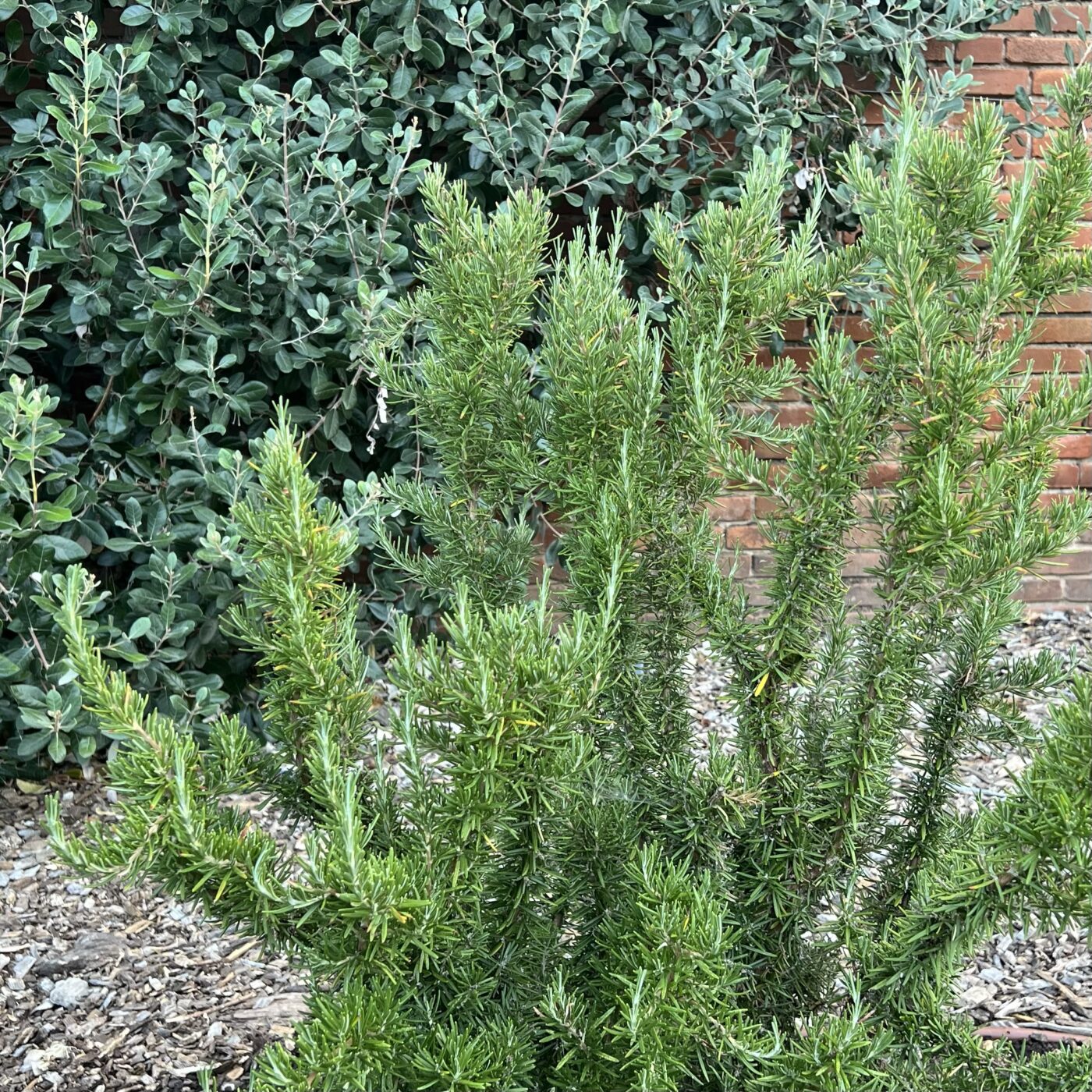
Oregano
A whole suite of species and hybrids within the genus Origanum are known by the name “oregano.” The central bed of the Herb Garden includes two of these species. Common oregano (Origanum vulgare) is best known from pantries and herb cabinets but also makes for a fantastic ornamental. Its dense habit, dark green leaves, and tiny white or mauve flowers are attractive in borders, pots, and rockeries. Syrian oregano (Origanum syriacum) sports grayish leaves and white flowers with a more upright habit. It has zesty leaves that are often used in Middle Eastern cooking.
Sage
Sages truly are the juggernauts of the garden world, equally at home as showstoppers in a perennial border or workhorses in a kitchen garden. Our herb garden highlights the merits of the common sage (Salvia officinalis). The large, soft leaves and purple flower clusters of this species are a boon to insects and contain oils with medicinal properties. A soothing aroma and earthy flavor are further highlights. The center bed holds the silvery wide-leaved cultivar ‘Berggarten,’ the yellow-green variegated ‘Icterina,’ and the enticingly purple-hued ‘Purpurascens.’
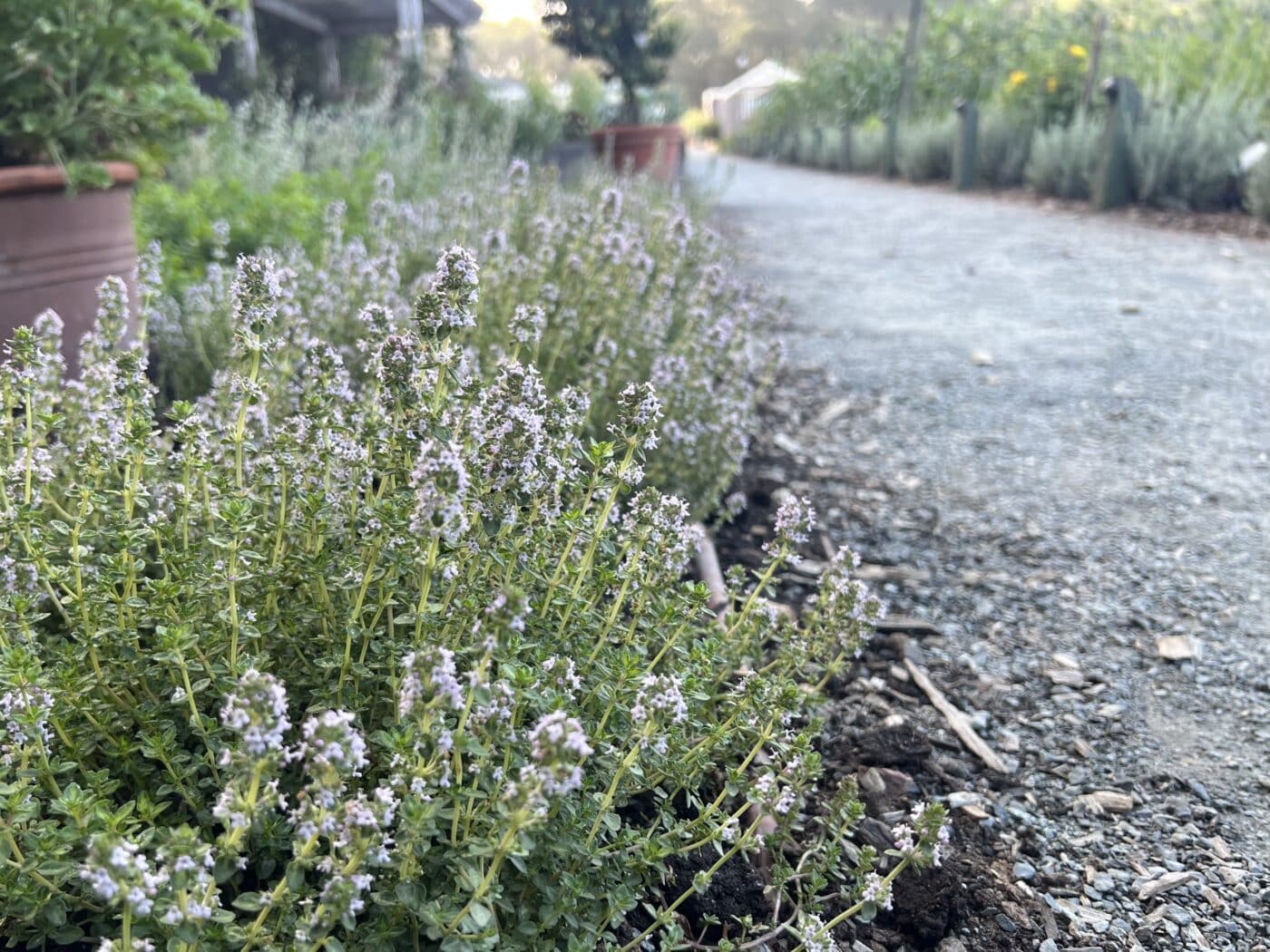
Thyme
With its ornamental foliage and low, pillowy habit, this iconic kitchen herb makes for a perfect edging plant along the path by the Herb Garden. Spikes of whorled pink-white, bee-attracting flowers provide an extra show from late spring through summer. A number of varieties have been incorporated into the design, including the classic culinary French and English thymes (Thymus vulgaris) with their spicy, piney fragrance; lemon thyme (Thymus x citriodorus) with its citrus scent; and oregano thyme (Thymus nummularius), which has dark green leaves and an aroma reminiscent of classic pizza herbs like oregano.
South Bed
Alliums
The south bed of the herb garden hosts several species from the genus Allium, including such mainstays of world kitchens as scallion (Allium cepa var. aggregatum), chives (Allium schoenoprasum), and garlic chives (Allium tuberosum). You can recognize them by their upright fountains of long, thin foliage sprouting up from an underground bulb and for their distinctive savory scents. Many alliums have showy blooms, and the rounded flower heads of chives and garlic chives offer a particularly dainty charm to the garden. Look for their light flowers on high stalks in spring and summer.
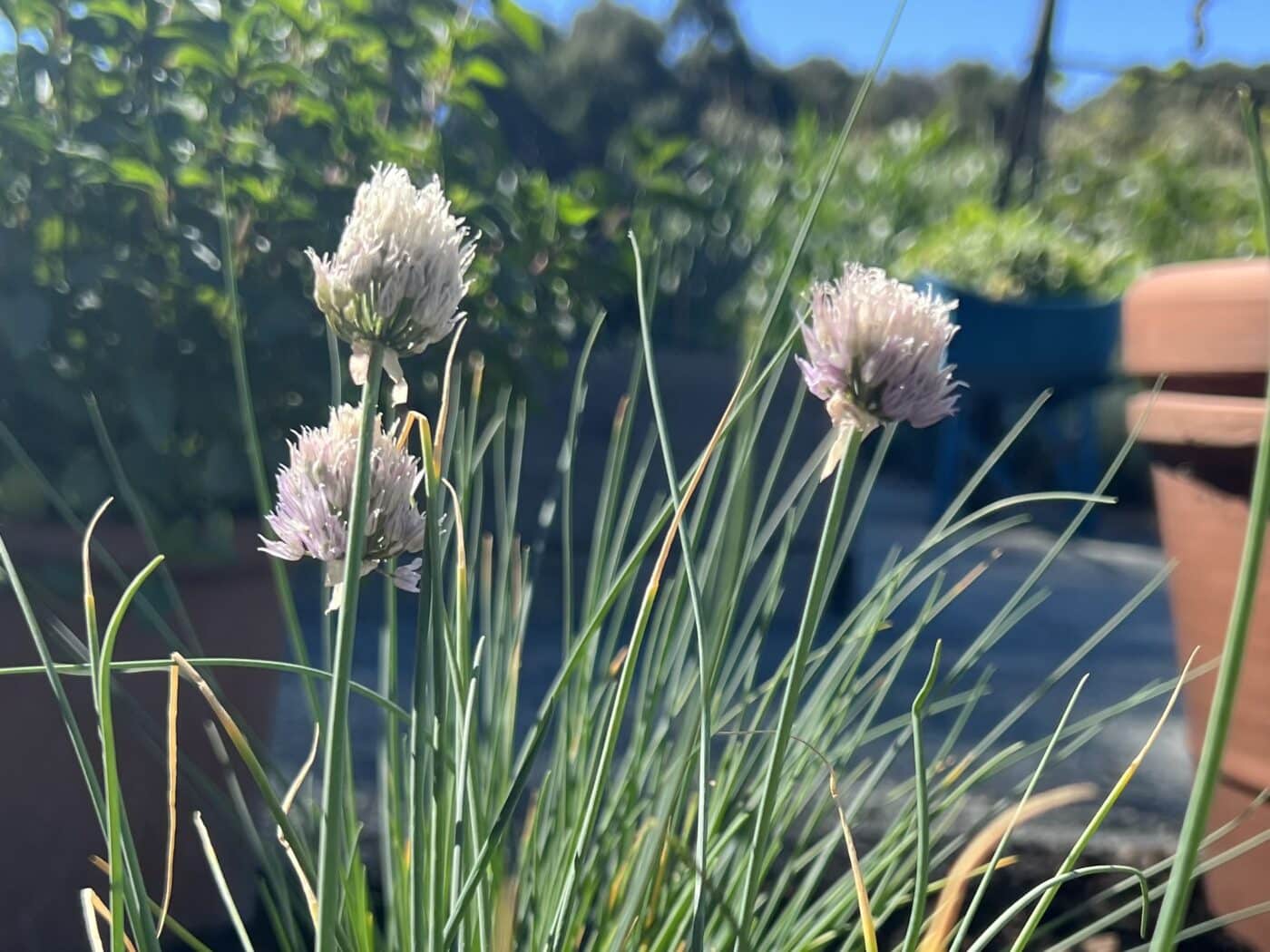
Artemisias
Artemisia is a diverse genus in the daisy family with two species represented in the south bed. Wormwood (Artemisia absinthium) is claimed to have a host of medicinal properties and is used to flavor absinthe and vermouth. Its finely textured gray-green foliage makes for a beautiful ornamental plant as well. French tarragon (Artemisia dracunculus var. sativa) is one of the “noble herbs” of French cooking and has greener foliage with small, pointed leaves whorled around the stems. It has a uniquely sweet scent and flavor, somewhere between licorice and rosemary.
Rue
Common rue (Ruta graveolens) is an ancient choice in medicinal gardens thanks to its fortifying properties. It was used in the Middle Ages to prevent pestilence and was even said to improve eyesight. The soft, bluish evergreen leaves and masses of yellow flowers create a gorgeous ornamental display that attracts insects. This is, however, one plant you may want to avoid touching as its oils may irritate the skin of sensitive individuals and can be toxic to dogs if ingested.
Saffron
Saffron crocus (Crocus sativa) is the autumnal counterpart of classic spring-blooming crocuses, with vase-shaped purple flowers that nestle close to the ground like scattered gems. The red branching structures (styles) in the flower yield an intoxicating spice. Each style has to be painstakingly harvested by hand, making saffron among the most valuable spices in the world. Look out for this bulb and its fragrant purple blooms in the south bed in autumn.
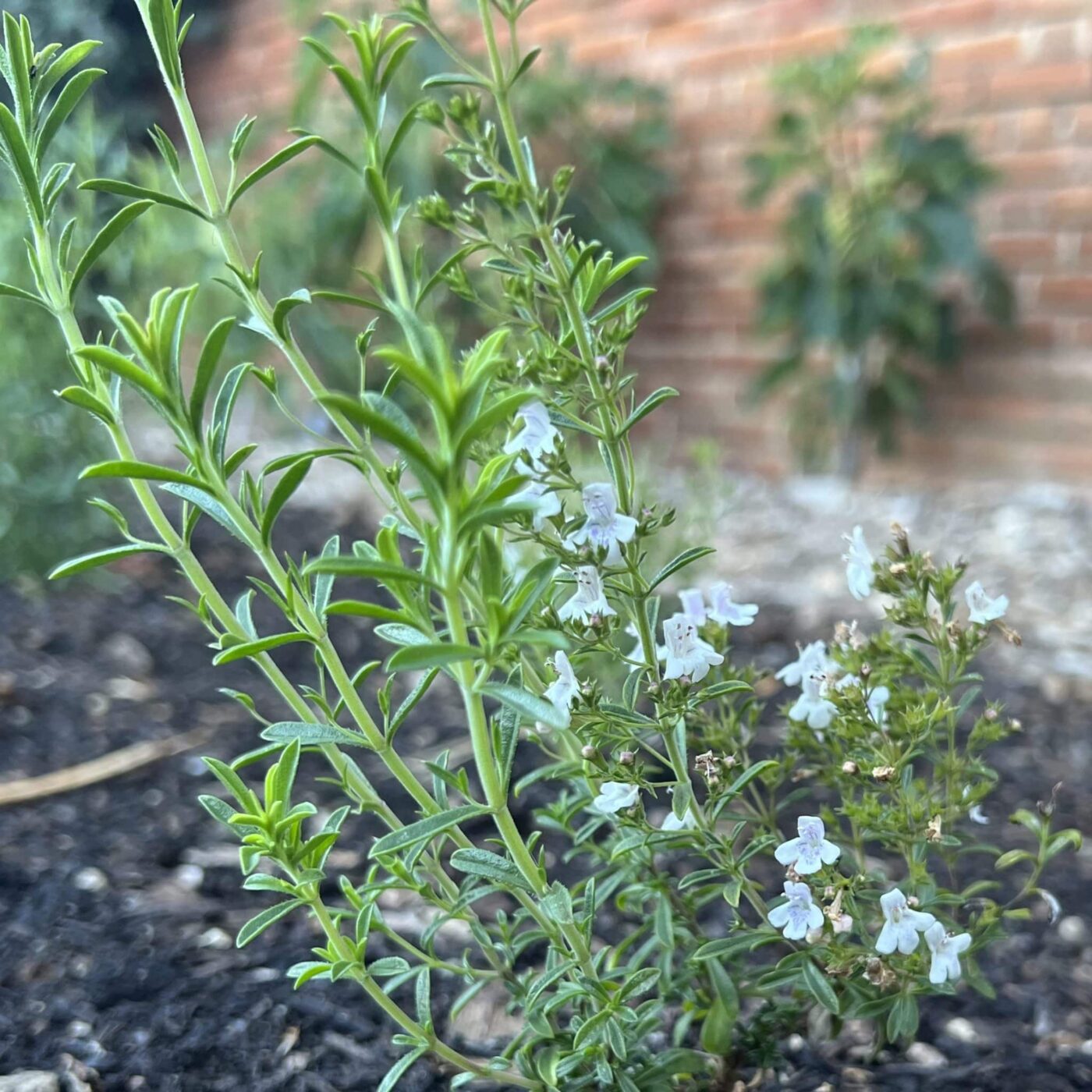
Savory
Winter savory (Satureja montana) is a perennial herb from the Mediterranean, the close cousin of the annual summer savory (Satureja hortensis). With its small, long, opposite leaves and woody habit, it bears a very superficial resemblance to rosemary, but don’t let that fool you: the foliage is soft, the growing habit is much smaller, and the scent is distinctively balsamic with hints of spice. Winter savory unveils masses of white flowers in late summer to early fall. Our garden includes both regular winter savory and a lemon-scented variety.
Za’atar
Also known as Mediterranean thyme, za’atar (Thymbra spicata) is an evergreen plant in the sage family often used in the classic Middle Eastern spice mix of the same name. Za’atar thrives in hot, dry conditions and has a spicy-sweet flavor. Its young leaves nest into each other along the stem, creating a ‘stacked’ effect. The lovely purple flowers are beloved by pollinators.
North Bed
Hyssop
In the traditional medicine practices of the Mediterranean region, hyssop (Hyssopus officinalis) is esteemed for its usefulness against coughs and colds. In bloom, the plant displays purple clusters of flowers along upright stalks, which are reminiscent of (but not to be confused with) the so-called giant hyssop, Agastache. The soft, elongated leaves carry a very strong mint-like odor and their pungent flavor can be used (with much discretion) to season food.

Chamomile
Famous from tea containers the world over, chamomile occupies the northeast corner of the Herb Garden towards the Garden Bar. Its little white and yellow flowers are precious enough to rival any daisy. Outside of its summer bloom season, you can recognise Roman chamomile (Chamaemelum nobile) for its low growing habit and finely-dissected, feather-like green foliage, which has a characteristic sweet scent. Roman chamomile is not to be confused with German chamomile (Matricaria chamomilla), which is also used for tea but has a more upright, taller habit.

Burnet
The closer you look at salad burnet (Sanguisorba minor), the more it reveals itself as a jewel box of surprises. The exquisitely toothed leaves fold in on themselves like clam shells. The ball-shaped flower heads, meanwhile, are held on high stalks and bloom in a deep crimson color. The flavor is reminiscent of mint and cucumber and is a great addition to salads. You’ll find burnet planted at the far north end of the Herb Garden.
Potted Plants
Citrus
Filoli’s tradition of growing citrus trees in containers is generations old and serves as a response to our winter temperatures, which can be chilly by Bay Area standards. Potted citrus can be shepherded under cover when the risk of frost is high and then put back on open display in the spring. Filoli’s potted citrus (Citrus) collection includes mandarin, orange, kumquat, calamondin, citron, and other exotic varieties. The leaves and fruit of different citrus are used to add bright flavor in cuisines worldwide. Citrus also has medicinal uses, most famously to prevent scurvy on old-time naval ships.
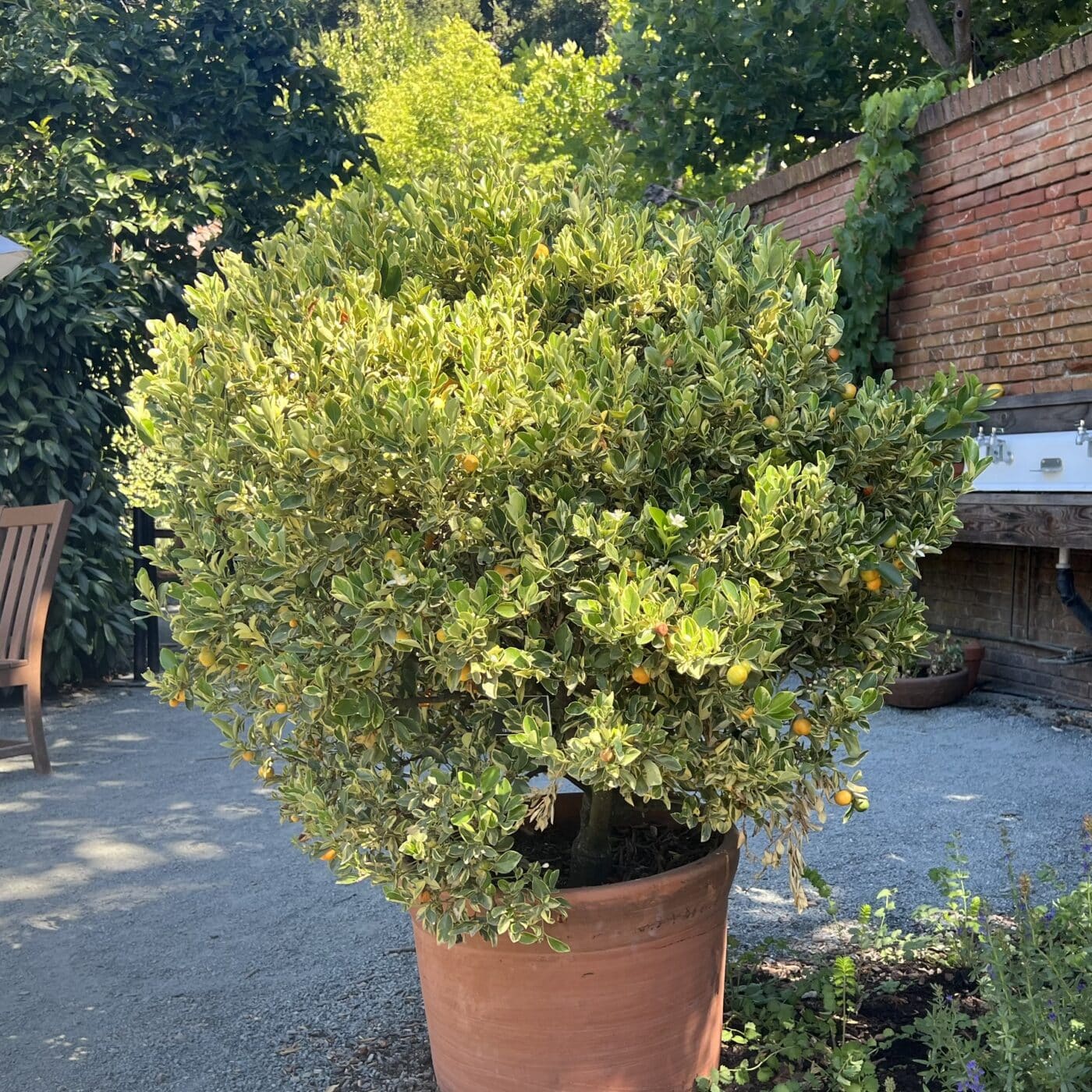
Lemongrass
Lemongrass (Cymbopogon citratus) is, true to its name, a member of the grass family, with its origins in the islands of Southeast Asia. The fountain of sword-like foliage can be distilled into an essential oil with powerful medicinal properties, while the young white stems are a popular ingredient in stir-fries. The plant’s strong lemon scent (which you can enjoy by gently rubbing the leaves) is a delight. At Filoli we grow our lemongrass in containers, so this tropical plant can be moved under protection in winter.
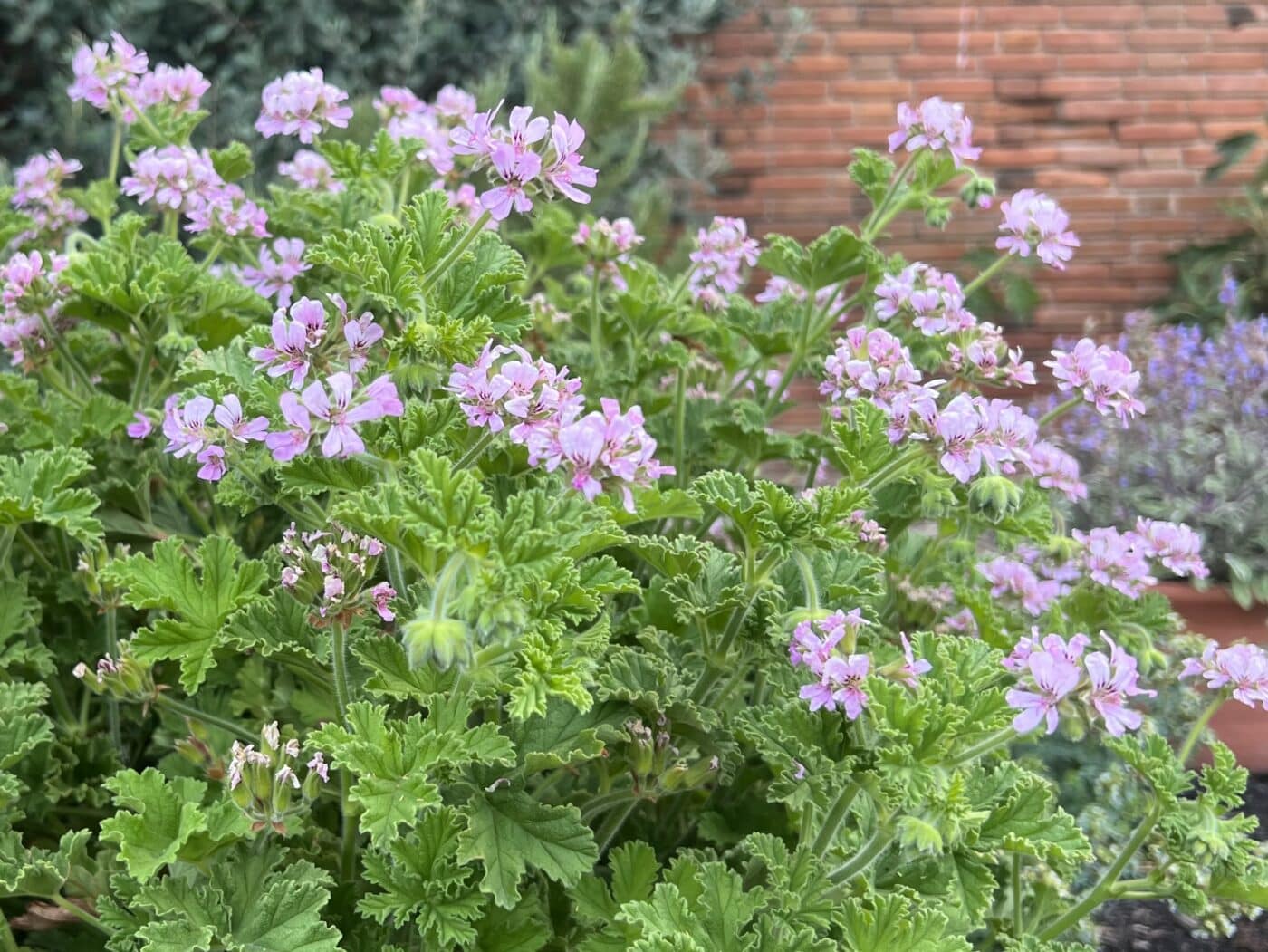
Rose Geranium
With its baroque leaf structure and exquisite flowers, this scented plant from the geranium family is a highlight of the Herb Garden. The name “rose geranium” (Pelargonium capitatum ‘Attar of Roses’) might seem to refer to the rosy-pink flowers that adorn the potted specimen in our garden. Just touch one of the leaves, however, and you’ll discover that they carry an intoxicating rosewater scent. Rose geraniums are not frost hardy (hence why we grow ours in a pot), but they do make good houseplants in winter or year-round.
Vietnamese Coriander
The grassy, peppery taste of Vietnamese coriander (Persicaria odorata) makes it a classic ingredient in Southeast Asian dishes like pho. In the garden it stands out for its long, pointed leaves and for the maroon markings towards the leaf base, which are V-shaped, like a pair of unfurling wings. This easy-to-grow herb is a fast spreader and needs protection from winter temperatures, making it best suited as a container plant.
Lemon Balm
Lemon balm (Melissa officinalis) is a veritable Swiss army knife of different uses: it has been variously recommended to attract bees, reduce anxiety, encourage sleep, and heal insect bites. The wrinkly-textured ovate leaves vaguely resemble mint, but their strong lemon scent is a dead giveaway to the plant’s true identity. The leaves are best used fresh as drying strips away the aroma and therapeutic oils. We grow lemon balm in pots because it can spread aggressively when planted in the ground.
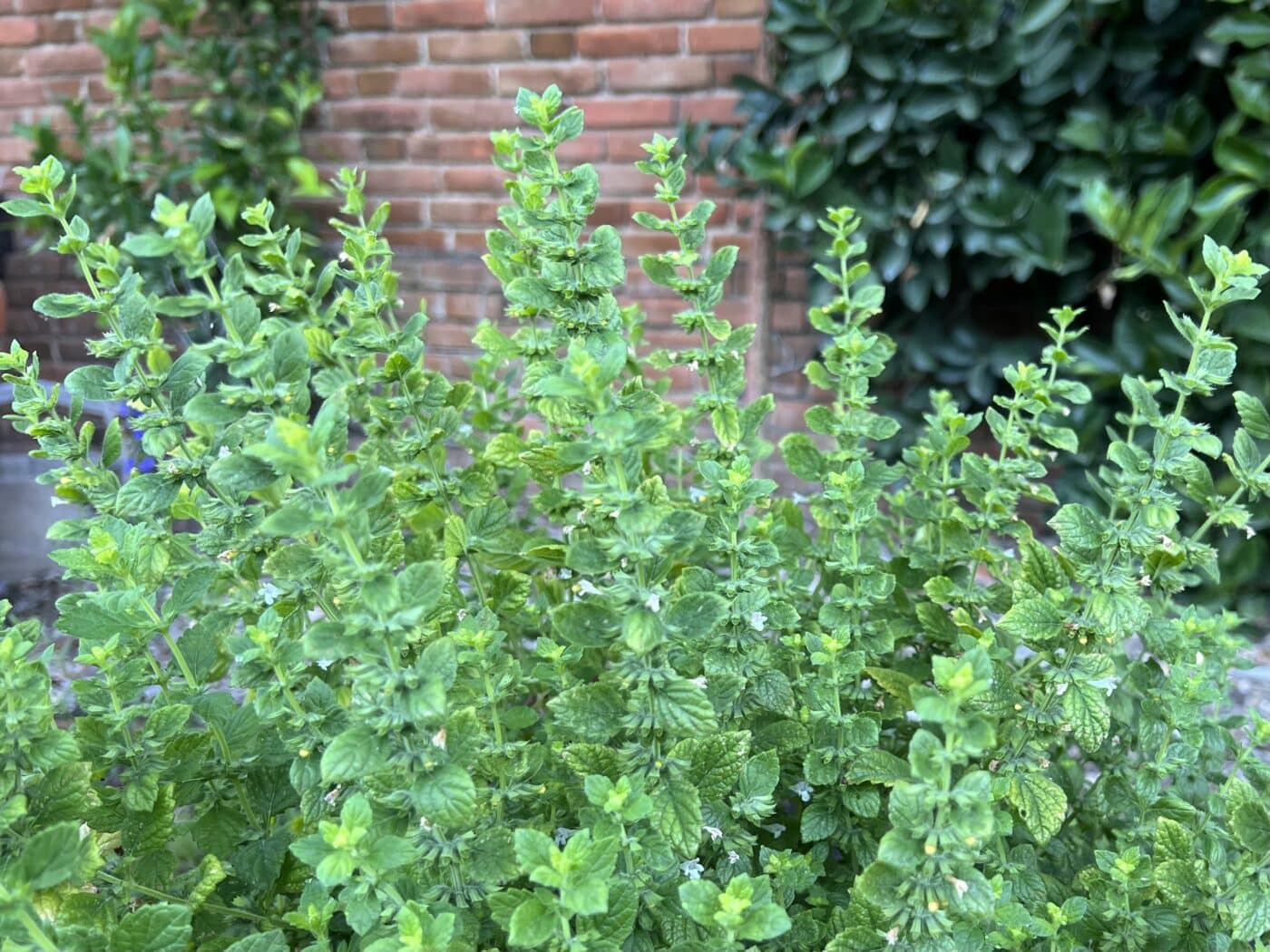
Mint
The iconic taste and fragrance of mint (Mentha) is practically synonymous with freshness, and it has been valued in culinary and therapeutic contexts since antiquity. The over two dozen species of mint share opposite, often wrinkly-textured leaves on squared stems. Many species have showy flowers, sometimes in repeated clusters at the leaf bases and sometimes massed at the end of the stem. Growing mint plants in containers helps keep these vigorous spreaders under control.
Plan your visit to the Herb Garden, and stimulate all your senses!
***
Filoli’s Internship program offers college students an introduction to a career in horticulture, public gardens, museums, and nonprofit administration. During the 10-week summer program, interns are welcomed as part of the Filoli community — collaborating with staff and their supervisor to accomplish projects, interact with Filoli visitors, and regularly meet with their summer intern cohorts. In addition to the duties specific to their daily work, interns interact with visitors during Filoli’s seasonal public programs. All interns get the opportunity to learn about nonprofit public garden and museum management and the interrelationship of work between various departments and our visitors.
